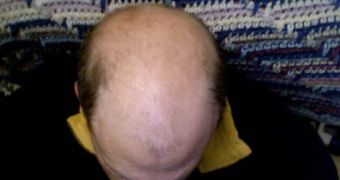Japanese researchers may have finally brought forth a ray of hope for millions of men around the globe, which are currently losing their hair either because of stress, or on account of genetic factors. In some cases, the disease known as cyclic hair loss, or alopecia, makes men lose their hair, grow it back, and then lose it again, and so on. However, in their study on innocent mice, the investigators learned that the animal models bred without the Sox21 gene were very likely to lose their hair almost immediately after the post-natal period. They hypothesize that they could identify the gene in humans as well.
That is not as hard to do as it may seem at first glance. Most research teams choose to conduct their studies on mice or rats on account of the fact that the animals' genome is fairly similar to ours, and equivalents between genes can be found with relative ease. The Japanese experts were led by expert Yumiko Saga, from the National Institute of Genetics (NIG) Division of Mammalian Development, and their paper appears in the latest issue of the prestigious scientific journal Proceedings of the National Academy of Science (PNAS).
“The mice started to lose their fur from postnatal day 11, beginning at the head and progressing toward the tail region of the back. Between day 20 and day 25, these mice eventually lost all of their body hair, including the whiskers. Intriguingly, new hair regrowth was initiated a few days later but was followed by renewed hair loss,” the experts wrote in the recent PNAS paper, Reuters informs. According to the team, they tracked the manifestations of alopecia in their animal models for more than two years, and noticed that the mice had thickened the layer of skin cells when the hair loss cycle was active. Additionally, their hair follicle had larger-than-average sebaceous glands.
“The gene is likely involved with the differentiation of stem cells that form the outer layer of the hair shaft. We confirmed that Sox21 is also expressed in the hair shaft cuticle in humans. These results indicate that the Sox21 gene could be responsible for some hair loss conditions in humans,” they added. Already, the first human skin sample study has revealed the existence of a similar gene in people. Now, it's just a matter of time until that gene is found, the experts say.

 14 DAY TRIAL //
14 DAY TRIAL //